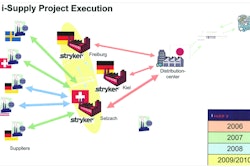Miami and London—August 25, 2014—U.S. companies made only marginal improvements in their ability to collect from customers and pay suppliers in 2013, while showing no improvement in how well they managed inventory, according to the 16th annual working capital survey from REL, a division of The Hackett Group, Inc., and CFO Magazine. The amount tied up in excess working capital at nearly 1,000 of the largest public companies In the U.S. is over a trillion dollars, according to the REL/CFO research.
With the U.S. economy slow, but stable, gross domestic product increased by 3.2 percent in 2013. But at the same time, the REL/CFO research found that gross margins decreased by 0.3 percent, indicating that companies are spending more internally to generate revenue.
The research also found that companies are continuing to borrow, using low interest rates to improve their cash position, with cash on hand increasing by 12 percent or $110 billion. At the same time, companies continued to ramp up capital expenditures, which have risen by 43 percent over the past three years.
The value of total net working capital rose by 3.2 percent in 2013 and days working capital improved by less than 1 percent. While days sales outstanding and days payable outstanding improved only slightly, days inventory on hand showed no change at all.
Cash conversion efficiency, or the time companies take to convert sales into cash, improved somewhat in 2013 after two years of declines. In addition, free cash flow—which is a key indicator of the health of corporate cash flows and represents the cash companies are able to generate after laying out money to maintain or expand their asset base—improved dramatically, rising by 23 percent over the previous year, indicating an improvement in cash flow management.
"The good news is that U.S. companies aren't getting any worse at managing their working capital," said Analisa DeHaro, associate principal for REL, a division of The Hackett Group. "In fact, the number of companies that improved working capital performance for three years in a row increased significantly in 2013. But for most companies, working capital remains a low priority. With easy access to low-interest cash, there's little motivation for companies to deal with complex issues like how to collect from customers faster without alienating them, what can be done to optimize payments to suppliers, or how to maintain just the right inventory levels given today's complex supply chains. But there are tremendous opportunities here, and with slow growth and shrinking margins, plus interest rates that are certain to rise, companies that focus in these three areas can drive real bottom-line benefit, today and in the future."
The REL/CFO research found that the largest U.S. public companies still have over $1 trillion in excess working capital. This amount, which represents the gap between top-quartile working capital performers and typical companies, represents about a third of the gross working capital held by these companies, and is equal to nearly 6 percent of the U.S. gross domestic product. Excess inventory represents the largest share of the working capital management gap—$423 billion.
Top performers in the REL/CFO analysis operate with about half the working capital of typical companies. They collect from customers in just over three weeks, more than three weeks faster than typical companies. They also take about 36 days to pay suppliers, over 10 days longer than typical companies. Finally, they hold just over two weeks of inventory, less than half that of typical companies.
Sustainability of working capital improvements continues to be an issue, with less than 10 percent of the companies in the study showing working capital improvements for three years in a row. But the number of companies showing consistent improvement in working capital has now grown for two consecutive years, a promising trend.
The research identified the industries in which companies showed the most improvement in working capital in 2013. Companies in the wireless telecommunications industry led the most improved list with a 14 percent improvement, followed by road and rail companies (12 percent improvement), auto components (11 percent improvement) and food products (10 percent improvement).
The REL/CFO Working Capital Survey publishes comprehensive performance information on working capital and a comprehensive array of underlying metrics for 997 of the largest companies in the U.S.


















